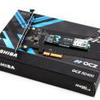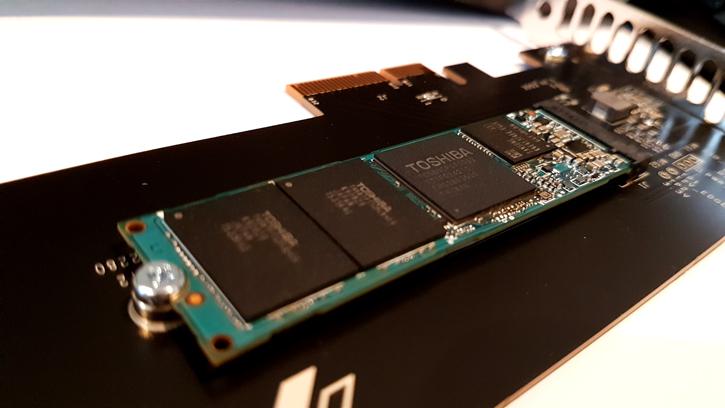Final Words & Conclusion
Final Words & Conclusion
The past years I've been evangelizing SSD in generic, for reasons that everybody can agree with now. Last year when NVMe was introduced, I started evangelizing that SSD units running that protocol, as it is the future of very high performance storage. The Toshiba OCZ RD400 is testimony to that. Though we feel that the firmware will need a tweak or two for slightly more stable performance, the numbers are just staggering really. It truly is impressive to see the numbers this two NAND chip SSD unit seems to deliver. For Toshiba slash OCZ this release is a massive step forward to bringing enthusiast client SSDs in this form factor to the consumer channel at more competitive prices. Of course there are requirements, you will need UEFI enabled, Windows 7, 8 or 10 with an NVMe driver and you will need a PCI-Express 3.0 environment thus a suitable motherboard and processor. Please do read page 6 on that for the full info on that.
Performance
The Toshiba OCZ RD400 512GB PCIe / M.2. SSD performance is close or even surpasses performance as advertised, it can reach 2,600 MB/sec reads and even up-to 1,600 MB/sec writes if it gets the right conditions. As always, these numbers are relative based on the workload and more or less ideal conditions you fire off on it. But copying a 38GB file at 1 GB/sec, that certainly doesn't disappoint for something this small utilizing only 6 Watts of energy. We do have to say that much like the Samsung 950 Pro, the controller start to heat up in this case to 70 Degrees C. Now in our benchmarks we did notice a bit of fluctuation here and there in the performance. That in fact could be thermal throttling.
Perf wise the highest perf numbers however always go for very selected benchmarks with bigger sequential writes or high block sizes. Once you pass 32/64 KB files sizes the performance jumps up hard and fast easily passing 1,000 MB/sec easily. So the PCI Express storage unit shines at large sequential writes. IOPs performance was very good as well, though our IOPS write test is showing below advertised performance, it was twice that of any SSD we tested. We think that our trace test (in PCMark Vantage 64-bit) is by an excellent base read test. This is a trace test and can emulate what you guys do on your PC but then multiplied by a factor 100. Trace testing resulted into ridiculous fasts scores. Well, everything we threw at this unit was digested with hair and bones in split seconds, so let me just call it what it is, among the fastest consumer grade storage unit available on the globe able to compete with the 950 Pro from Samsung.
Street prices:
We looked up the numbers, you may expect the following prices. Toshiba will release two SKUs per volume size as just the M.2. SSD and the M.2. SSD bundled with the PCIe adapter card (there's an -A tag added to product code)
So we assume that most of you will purchase just the M.2. SSD, as you can see pricing would boil down like this:
- 128 GB @ 129 EURO = 1,00 / GB
- 256 GB @ 189 EURO = 0,73 / GB
- 512 GB @ 329 EURO = 0,64 / GB
- 1 TB @ 759 EURO = 0,74 / GB
The Verdict
There's huge potential with NVMe based products and this is just the beginning, today's tested RD400 is living proof of that as it is seriously fast. You'll retreive excruciating fast storage performance for your money. You do need to use the right combination of OS/UEFI motherboard and CPU, we do recommend X79/X99 and Z87/Z97 here. But people buying a product like this surely will have such hardware already, right? You will receive a five year warranty (the same as shield-plus but now from Toshiba). So whatever you are planning with this storage unit, you are good to go from gaming, overall net pc usage (albeit overkill) to video transcoding and editing and content creation, this is by among the fastest SSD available for IO intensive workloads, consumer grade that is. Depending on the volume size the TBE written (endurance) will last you a long time. The looks are just great albeit a bit of a downer is a non black PCB for the M.2. unit. Some of the benchmarks where a little flakey, so I do expect another firmware update in the near future. But yeah, NVMe is setting a new standard in the SSD storage arena. The Toshiba OCZ RD400 series deserves our top pick award as the performance is downright staggering, the RD400 series will be available starting today.
Recommended Downloads



